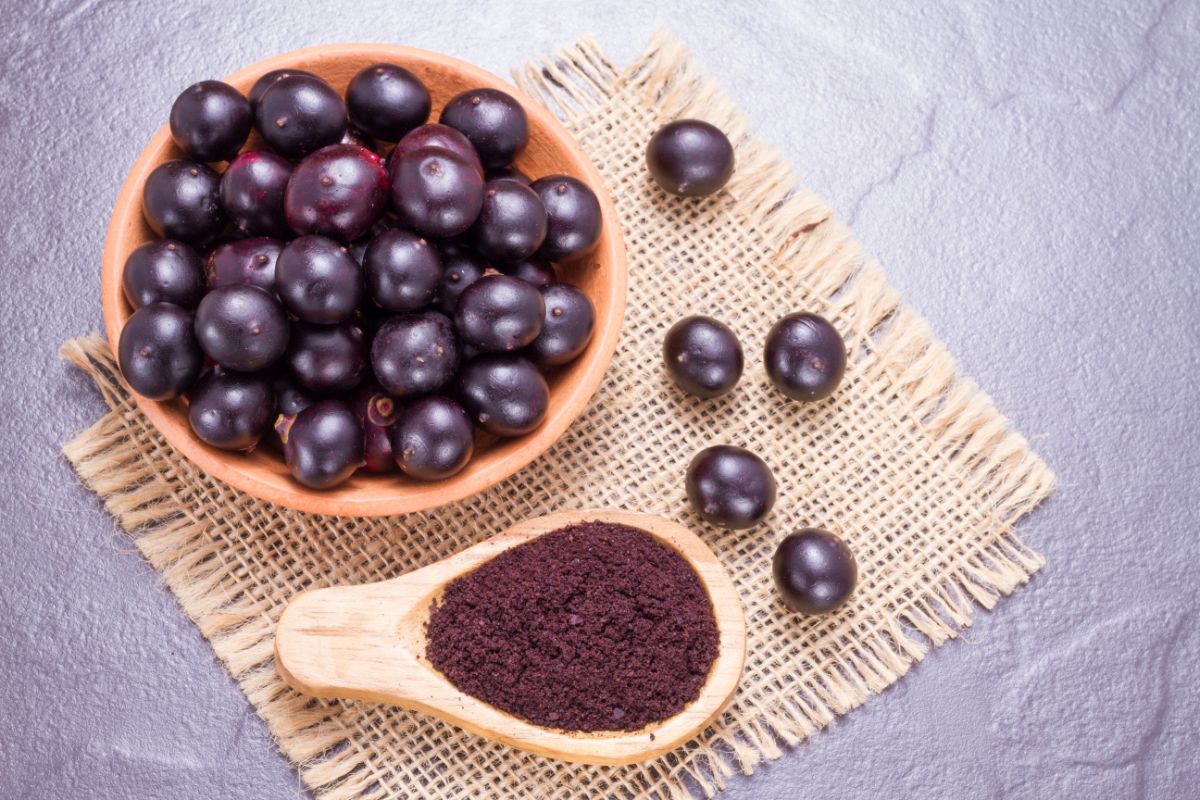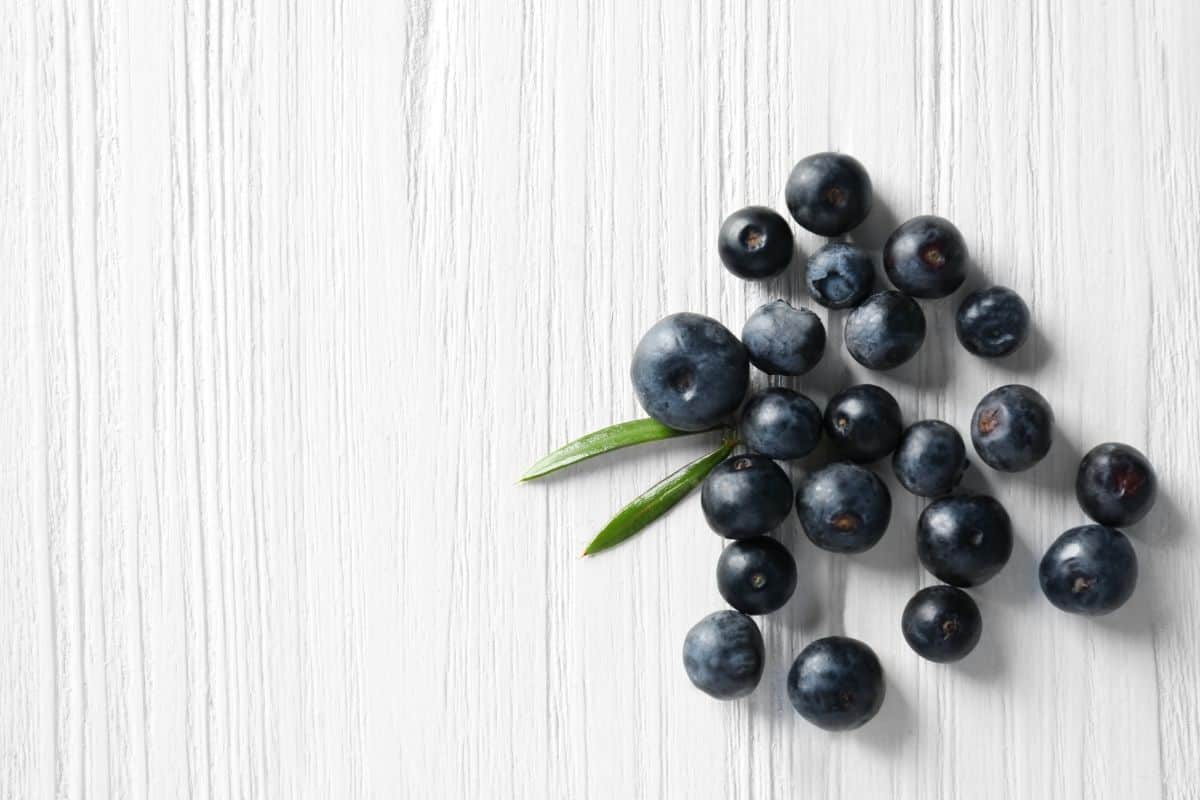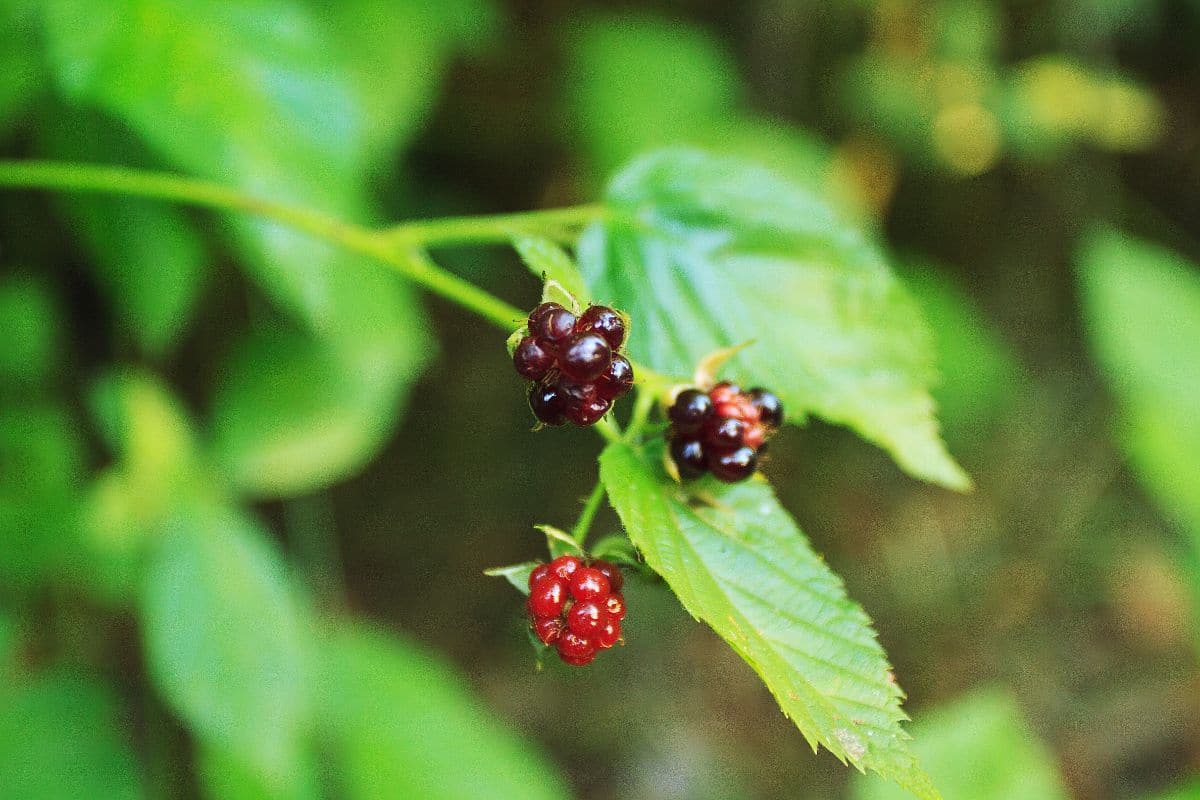Acai has increased in popularity over the past 20 years due to its unique flavor profile and numerous health benefits.
It’s a small, dark purple berry from the Amazon rainforest, and has become an important ingredient in all kinds of foods and beverages, including smoothie bowls, and juices, and is often touted as a health food.

But if you’ve never had acai before, you might be wondering what it tastes like. If this sounds like you, you’ve come to the right place!
In this article, we’re going to take you through everything you’ll need to know about the taste of acai, and answer why it is considered a superfood by inspecting its nutritional profile, and all of the dishes that it is added to.
We’ve also included some tips on where you can find it and what other foods taste similar.
What Is Acai?
Acai is a fruit that grows on the acai palm tree (Euterpe oleracea), which is native to Brazil’s Amazon rainforest.
It is primarily grown in the country’s northern regions, where it has been a traditional part of the local diet for centuries.
The fruit is small and round, like a grape, with a dark purple skin that is edible. The fruit contains a large seed that accounts for the majority of its volume.
What is commonly consumed and used to make acai-based products is the pulp surrounding the seed.
What Does Acai Taste Like?
Acai has a distinct and flavorful taste that sets it apart from other fruits. The initial flavor is often described as a cross between blackberry and dark chocolate, with slightly bitter cocoa notes.
As the flavors progress, hints of tartness and earthiness emerge, adding depth to the overall flavor profile. The combination of these flavors creates a one-of-a-kind and pleasurable palate experience.
Furthermore, the flavor of acai can vary slightly depending on the method of preparation and the accompanying ingredients.
Acai’s flavor can be enhanced by adding sweet fruits like bananas or strawberries to a smoothie bowl or juice.
When consumed alone or in combination with tangy ingredients such as citrus fruits, the tartness may become more pronounced.
Acai retains its signature balance of sweet, tart, and earthy flavors regardless of the specific variations, making it a versatile and delicious ingredient.
Acai’s texture also contributes to its overall flavor experience. Acai pulp has a smooth and velvety texture when consumed in its natural form, similar to that of a thick puree.
This creamy texture adds a luxurious mouthfeel that enhances the flavor’s enjoyment.
The texture complements toppings such as crunchy granola or shredded coconut, creating a delightful contrast that enhances the overall sensory experience.
Acai has a pleasant sweetness that is not overpoweringly sweet. It has a mild sweetness that is not as strong as that of other fruits.
As a result, it is an excellent choice for those who prefer a more subtle sweetness in their dishes.
Acai’s subtle sweetness allows other flavors to stand out, making it a versatile ingredient that can be combined with a wide range of ingredients and flavors to create well-balanced and delicious dishes.
What Dishes Is Acai Added To?
Acai is a versatile fruit that can be used in a variety of dishes and recipes. Smoothie bowls are one of the most popular ways to consume acai.
Acai bowls are typically made with a thick and creamy mixture of frozen acai pulp, fruits, and toppings like granola, coconut flakes, and fresh berries.
These bowls are not only beautiful, but they also provide a refreshing and nourishing treat.
Acai is also commonly used to make acai juice, which can be consumed alone or combined with smoothies and cocktails.
The juice retains the distinct flavor of acai, making it a flavorful and nutrient-dense beverage option.
Acai can be found in desserts such as acai sorbet, ice cream, and even chocolates, in addition to smoothie bowls and juices.
Its distinct flavor gives these sweet treats depth, making them indulgent and satisfying.

The Nutritional Profile Of Acai
Aside from its delicious taste, acai is well-known for its high nutritional value. This fruit is high in antioxidants, which help protect the body from potentially harmful free radicals.
Acai is also high in fiber, healthy fats, and minerals such as calcium, iron, and potassium.
It also contains vitamins A, C, and E, which help with overall health and well-being.
Acai’s nutrient-dense profile has made it a popular choice for health-conscious people looking to supplement their diets with natural, whole foods.
5 Foods Similar To Acai
If you can’t find acai or want to try something else with similar flavors and nutritional benefits, you might want to first check out some of the most similar foods to Acai.
In the sections below, we’re going to outline 5 foods that are quite similar to Acai.
While they might not be identical in terms of flavor and texture, you should be able to get some kind of idea by trying these out.
Blueberries
Because of their high antioxidant content, blueberries are frequently referred to as a superfood. In terms of flavor, they are similar to acai, with a mildly sweet and slightly tart flavor.
Blueberries are a versatile fruit that can be eaten fresh, frozen, or blended into smoothies, baked goods, and salads.
Blackberries
Blackberries, like acai, have a rich, dark color and a sweet-tart flavor profile. These berries are well-known for their high vitamin C content and ability to aid digestion.
Blackberries can be eaten on their own, added to cereals and yogurt, or used in jams and desserts.
Pomegranate
Pomegranate seeds have a distinct flavor profile that combines sweetness with a tangy undertone. They are high in vitamins and minerals and are known for their antioxidant properties.
Pomegranate seeds can be sprinkled on salads, blended into smoothies, or eaten as a light snack.
Maqui Berry
Maqui berries, which are native to South America, are similar to acai in terms of their deep purple color and antioxidant content. They have a slightly tart flavor with notes of blackberry and cherry.
Maqui berries are commonly consumed as a powder, which can be added to smoothies, juices, or used as a natural food coloring.
Goji Berries
Goji berries are widely regarded as a superfood due to their numerous health benefits. They taste sweet and slightly tart, like a cross between cranberries and cherries.
Goji berries are delicious as a snack, in trail mixes, and in smoothies and baked goods.
A Short History Of Acai
Beginnings
Acai (pronounced ah-sigh-ee) has a long history in the Amazon rainforest of Brazil and other parts of South America.
The acai palm tree, scientifically known as Euterpe oleracea, produces this small, dark purple fruit. Acai has long been revered by Amazonian indigenous tribes for its nutritional and medicinal properties.
The acai palm tree is native to the Amazon rainforest’s floodplains and swamps, particularly in Brazil. Acai berries have been consumed by indigenous tribes such as the Tup-Guaran for generations.
They discovered the many advantages of this fruit, which provided them with food, energy, and healing properties.
The indigenous people would gather the acai berries, extract the pulp, and consume it as a staple food.
Worldwide Popularity
Acai gained popularity outside of the Amazon rainforest in the 1970s and 1980s when surfers and tourists visiting Brazil discovered this unusual fruit.
Because of its energizing and refreshing properties, it has become popular among athletes and beachgoers.

Acai bowls, a dish made by blending frozen acai pulp with other fruits and toppings, have become popular in Brazil, particularly in coastal regions such as Rio de Janeiro.
As global demand for acai grew, commercial production expanded in the Amazon region, primarily in Brazil.
Acai farming’s expansion brought economic opportunities to local communities, creating jobs and income sources.
However, concerns have been raised about the Amazon rainforest’s long-term viability and preservation.
Acai palm tree deforestation and overharvesting have become significant challenges, prompting initiatives for sustainable cultivation and responsible sourcing.
Efforts have been made in recent years to protect the fragile ecosystem while also supporting the livelihoods of local farmers.
To balance acai production with forest conservation, sustainable farming practices such as agroforestry have been implemented.
Final Thoughts
So that was our short guide explaining the flavor profile, as well as some of the history of this unique superfood.
We hope that this guide has explained everything you wanted to know and that you’re now a lot more confident about whether or not acai is worth trying.
If you still have some questions, keep reading for our FAQ section.
Frequently Asked Questions
Acai’s likeability is largely determined by your taste preferences. Acai has a distinct flavor that is described as a cross between berry and chocolate.
Acai is likely to appeal to those who enjoy the taste of berries and appreciate a slightly tart and earthy flavor. As mentioned before, it’s popular in smoothies, bowls, and as a topping for various dishes.
Yes! Acai is classified as a berry. It is a drupe that comes from the Acai palm tree and is botanically classified as a fruit with a fleshy outer part and a hard shell containing the seed.
Acai berries are small and round, about the size of a grape, and when ripe, they are dark purple or black.
While Acai has grown in popularity as a superfood, there is no direct evidence to support its effectiveness solely for weight loss.
Acai berries are low in calories and high in fiber, which can aid in satiety and a healthy diet.
However, incorporating Acai as part of a healthy lifestyle that includes regular exercise and a well-balanced diet is more likely to help with weight loss.
Yes, Acai has gained global popularity in recent years, and it is now available in many countries in a variety of forms.
Frozen Acai pulp, Acai powder, Acai capsules, and Acai-based products are widely available in health food stores, supermarkets, and online retailers worldwide.
In general, most people can safely consume Acai as part of a well-balanced diet. Individual reactions, however, may differ. Acai may cause digestive issues or allergies in some people.
Furthermore, Acai products containing added sugars or consumed in excess may contribute to weight gain or blood sugar imbalances.
If you have any specific concerns or medical conditions, it is best to consume Acai in moderation and consult with a healthcare professional.






